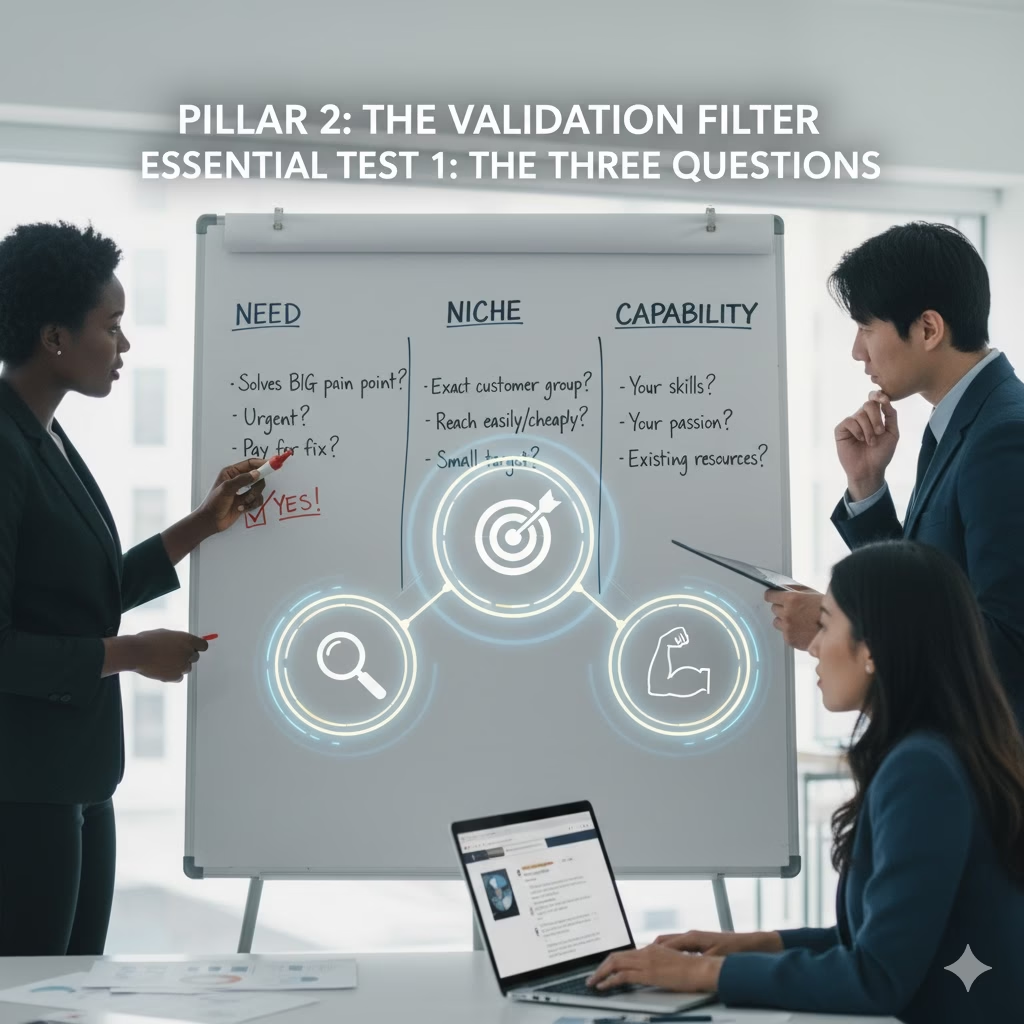
The moment a brilliant idea hits you—the “A-Ha!” Moment—is exciting. The idea feels perfect. It seems sure to make money. But simply having a great idea is not enough to create a Profitable Business Plan. Many brilliant concepts fail because they lack a clear path to the market. Genius is not just the idea itself. Genius is the strong system you use to catch and process that insight and develop it into a robust Profitable Business Plan.
This article gives you the simple steps to move past the first spark of inspiration. You will learn three key systems to catch, check, and build your idea. This process turns a sudden thought into a Profitable Business Plan.
Pillar 1: The Insight Capture System

The first and biggest way a great idea fails is by being forgotten. You must create a simple, reliable way to catch these quick thoughts right away. If you do not write them down, they will disappear.
The ‘Single Point of Capture’ (The Idea Home Base)
Stop trusting your memory. Do not let notes hide across different apps and papers. You must choose one single tool. This could be a special notebook, a simple note-taking app, or a voice recorder. This tool is your safe place for sudden insights. The faster you write down the thought, the less likely it is to cause “attention residue.” This residue is the mental cost of switching tasks, which distracts you from what you are doing now. By creating a single point of capture, you give your mind peace. You know your idea is safe.
The ‘Brain Dump Protocol’
Ideas are often messy. They come out incomplete. Schedule 10 minutes at the end of your workday for the Brain Dump Protocol. This is your time to look at the ideas you captured. Your job is not to judge them. Your job is to make them bigger. Write out the main idea, the problem it solves, and the first group of people who might need it. This simple act changes the idea from a quick feeling into a clear, documented asset ready for the next step toward a Profitable Business Plan.
Pillar 2: The Validation Filter (The “Idea Stress Test”)

Once you have written down your idea, you must test it hard. This moves you from the feeling of “Is this cool?” to the tough market question: “Will this become a Profitable Business Plan?”
Essential Test 1: The Three Questions
Ask your idea these three hard questions. They check if your idea has a real place in the market:
- Need: Does this idea solve a big pain point? Is it a problem people are looking to fix right now? The pain must be so strong that people will gladly pay money for the fix. If your idea is just a “nice-to-have,” it will not be profitable.
- Niche: Can you name the exact, small group of people who have this problem? And can you reach them easily and without spending too much money? When you are starting out, focusing on a small niche is always better than aiming for a huge market. This targeted focus helps you prove your idea works before spending too much money.
- Capability: Does this idea fit well with your special skills, your life purpose, or the resources you already have? This check gives you a real advantage over others who might try the same idea. It makes your work easier and faster.
If the answer to any of these questions is weak, the idea needs serious changes before it can become a Profitable Business Plan.
Essential Test 2: The Smallest Viable Test (SVT)

Do not spend time building the full product right away. That is a huge risk. The smart move is to find the fastest, cheapest way to prove that people actually want to buy your solution. This is called the Smallest Viable Test (SVT).
- Simple Tests: Set up a simple one-page website that talks about your idea. Ask people to sign up for email updates. Better yet, ask them for a small pre-order payment. You can also run a short, cheap online ad to see how many people click on it.
- Goal: The goal is to prove demand with a real commitment (money or time), not just a quick “I like that!” comment. Real data is the only foundation for a Profitable Business Plan.
Pillar 3: The Structure Blueprint (From Idea to Framework)

A great, proven idea is still just a piece of paper if you lack a plan. This system helps you change abstract thoughts into a clear roadmap for starting the business.
Essential Test 3: Reverse Engineering the Vision
Instead of trying to figure out the very next small step, start at the far end of your goal and work backward. This ensures every step you take is meaningful.
- Define the 5-Year Vision: What is the huge, life-changing goal this idea will reach? How will it look when it is fully successful?
- Set the 1-Year Milestone: What is the biggest, single success you need to prove that the 5-year vision is truly possible?
- Establish the 90-Day Plan: What are the three most important, fixed tasks you must complete in the next three months? These must directly help you reach the 1-year goal.
This backward process makes sure that the simple task you do today is always linked to your highest purpose.
The Lean Canvas Model
Before you write a very long business report, you must summarize your entire plan on one page. The Lean Canvas Model forces you to do this. It ensures you clearly define the core parts of your Profitable Business Plan in a simple way:
- The Problem your idea solves.
- The Solution you offer.
- Your Unique Value Proposition (why you are special).
- Your Revenue Streams (how you make money) and Cost Structure (how you spend money).
Conclusion: The Architect of Innovation

The path from a sudden, inspired spark to a profitable business is not magic. It is a clear method. By building a strong system for catching, stress-testing, and structuring your ideas, you change your role. You stop being a person who just receives ideas. You become an intentional architect of innovation. Stop letting great ideas pass you by. Start building your next Profitable Business Plan today.
Suggested Educational References
- Lean Startup – The Lean Startup
- NIH – individual differences in cognitive offloading
Recent Posts


